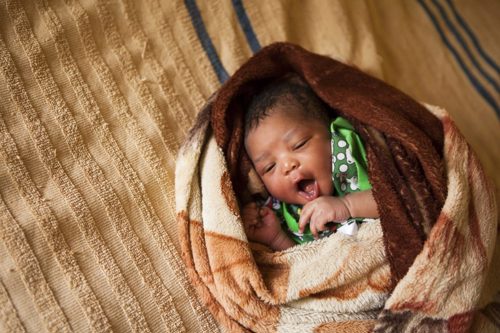From mouthwash to medicine: Unexpected innovations (Guest blog)
14.06.16
Pauline Williams, our head of global health R&D, realised that one of GSK’s mouthwash products contains chlorhexidine. This antiseptic has been found to have a significant impact on reducing umbilical cord infections among newborns in developing countries. It had been identified as a ‘life-saving commodity’ by a United Nations Commission, which called for more manufacturers to make high-quality chlorhexidine products for newborns in low-resource settings.
Pauline put two and two together and in 2012, kick-started a project at GSK to reformulate the antiseptic solution in our mouthwash into a gel that could be used to prevent umbilical cord infection among babies in the poorest countries. Each year, hundreds of thousands of newborns lose their lives to sepsis, which can be caused by bacteria entering the body through a newly-cut umbilical cord. This risk is higher in developing countries, where a high proportion of births happen at home and unsuitable materials such as ash are traditionally placed on the umbilical cord stump. There is a real need for new interventions to help tackle these needless deaths.
Following Pauline’s ‘light bulb’ moment, we worked to develop the chlorhexidine gel in a novel way. We did it with Save the Children, having embarked on a five-year partnership with them in May 2013. This collaboration provided an ideal context in which to advance the gel. On-the-ground knowledge and insights from Save the Children helped us to develop a gel that would be stable in high temperatures. It is also packaged in individual single-use foil sachets that can be opened without scissors. The involvement of Save the Children also gave us confidence that the gel would get to the communities that need it most. The gel reached an important milestone in April 2016, when the European Medicines Agency granted it a positive scientific opinion. Now, we will register the gel in low-income countries with the highest rates of neonatal mortality.

Bianca, six hours old, in Kopsiro Health Facility in Bungoma County Kenya. Her mother is Caro Cherangat, 25 years. Bungoma County has one of the highest numbers of maternal and newborn deaths in Kenya. In partnership with GSK, Save the Children is launching a Signature Health Programme that will work towards contributing to achieve a reduction in maternal and newborn mortality in Bungoma County, Kenya over the next 4 years. This project will target pregnant women and newborns and encourage them to seek quality health services while supporting the health system to ensure that it can provide these services to them. © Colin Crowley_Save the Children

Bianca, six hours old, in Kopsiro Health Facility in Bungoma County Kenya. Her mother is Caro Cherangat, 25 years. Bungoma County has one of the highest numbers of maternal and newborn deaths in Kenya. In partnership with GSK, Save the Children is launching a Signature Health Programme that will work towards contributing to achieve a reduction in maternal and newborn mortality in Bungoma County, Kenya over the next 4 years. This project will target pregnant women and newborns and encourage them to seek quality health services while supporting the health system to ensure that it can provide these services to them. © Colin Crowley_Save the Children
Chlorhexidine is a good illustration of our business’ approach to scientific innovation. We’ve recognised that we need to look beyond the walls of our laboratories and pursue different approaches to reflect the kind of unmet needs we’re addressing. When it comes to developing products for the world’s poorest people, we need to work more smartly, more collaboratively and share the costs and risks involved in research and development. That’s why for diseases of developing countries we pursue an open innovation model in which our scientists team up with experts from other organisations and we share our data with the outside world. Likewise, new approaches are needed to tackle other tough scientific and global challenges such as antimicrobial resistance.
Chlorhexidine is also an example of why we need to think innovatively about helping patients to access the healthcare they need. As a company, we are embedding a flexible pricing model that balances access with being a sustainable, innovative business: our prices reflect a country’s economic maturity and we pursue a graduated approach to intellectual property. Given this gel is intended for babies in the poorest countries, we plan to make it available at a not-for-profit price. While our gel could help fill the supply gap for chlorhexidine, ultimately we would like others to make a sustainable business out of it. So we’ll share our formula and manufacturing know-how with interested local manufacturers.
If the chlorhexidine gel makes it through the next regulatory steps and becomes widely available, it could help protect babies in the poorest countries from life-threatening infections. That’s the single most important thing. Hopefully, though, it could also provide inspiration for thinking laterally about how to discover and develop different interventions that could help tackle the global health challenges of today and tomorrow.
